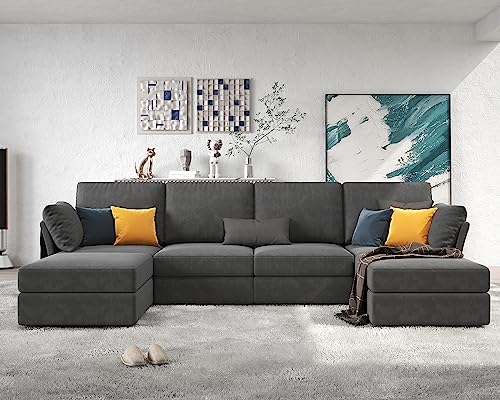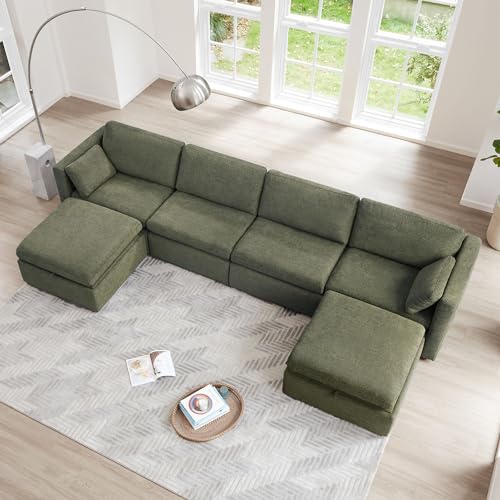Five Killer Quora Answers To What Are U Shaped Valleys
페이지 정보

본문
 what are u shaped valleys Are big u shape sofa shaped Valleys (Socialwebleads.com)?
what are u shaped valleys Are big u shape sofa shaped Valleys (Socialwebleads.com)?A U-shaped valley is an geological formation with steep, high sides and a flat or rounded valley bottom. They are the result of glaciation and are frequently the home of rivers, lakes, sand traps on golf courses, kettle lakes (water hazards), and other such natural features.
 The erosion of glaciers creates U-shaped valleys, caused by the plucking of rocks from the side and bottom of the valley. These valleys are common in mountainous regions across the world.
The erosion of glaciers creates U-shaped valleys, caused by the plucking of rocks from the side and bottom of the valley. These valleys are common in mountainous regions across the world.They are created by glaciers.
Glaciers are huge bodies of ice which form on mountains and then move down them. As they degrade they form U shape valleys with flat floors and steep sides. These valleys are different from river valleys that are generally shaped like the letter V. Although glacial erosion can occur in many places but these valleys are characteristic of mountain areas. They are so distinctive that you can tell if the landscape was created by glaciers or rivers.
The process of creating a U shape valley begins by creating an V shape river valley. As the glacier degrades the landscape, it encroaches upon the V-shaped river valley and produces an inverted U shape. The ice also scour the land's surface creating straight and high walls on the sides of valley. This process is known as glaciation and requires an enormous amount of strength to move the earth in this manner.
As the glacier continues to degrade the landscape it also makes the valley more and more wide. The glacier's ice is less frictional than the rocks. As the glacier moves through the valley, it also causes abrasion of the rock surfaces. This pulls the weaker rocks away from the valley walls through a process called plucking. These processes help to broaden, smoothen and deepen the U-shaped valley.
These processes also cause a tiny side valley to hang over the main valley. The valley may be filled with ribbon lakes, which are formed when water flows through the glacier. The valley is also distinguished with striations, ruts and till on the sides as well as moraines and till on the floor.
U-shaped valleys are commonplace across the globe. They are prevalent in mountainous regions, including the Andes, Alps, Caucasus, Himalaya and Rocky Mountains. In the United States they are usually located in national parks. Examples include the Nant Ffrancon valley in Wales and Glacier National Park in Montana. In some cases valleys can expand to the coast and turn into Fjords. This is a natural process that occurs when the glacier melts. It could take thousands of years to build these valleys.
They are deep
U-shaped valleys have steep sides that curve towards the base, and wide, flat valley floors. They are formed in valleys of rivers that were filled by glaciers during the ice age. The glaciers erode valley floors via cutting and abrasion, which causes the valley to expand and expand more evenly than with a river. These kinds of features can be seen in mountainous regions all over the globe, including the Andes Mountains, Alps Mountains, Himalayas Mountains, Rocky Mountains and New Zealand.
Glacial erosion of a river valley can transform it into a u-shaped valley, increasing its depth and expanding it. The erosive power of the glacier also causes smaller side valleys to hang above the main valley, which is usually identified by waterfalls. These features are called "hanging valleys" because they are suspended above the main valley when the glacier retreats.
These valleys are often enclosed by forests and contain lakes. Some valleys are used for farming, while others are filled with water. Many of these valleys are in Alaska which is where glacial melt is most pronounced.
Valley glaciers are huge, flowing like rivers that slowly slide down mountain slopes. They can reach depths of more than 1000 feet and are the dominant form of valley erosion in alpine regions. They eat away at the rocks on the bottom of the valley leaving behind depressions or holes that are then filled with water. The lakes that result are long and thin, and can be located in the peaks of some mountains.
Another type of valley, a glacial trough, is a U-shaped valley which extends into saltwater and creates an Fjord. They can be found all over the world including Norway, where they're called Fjords. These are formed by melting the ice and can be found on maps of the world. They are usually characterized by their rounded sides, which resemble the shape of a U shape in cross-section as well as steep sides. The walls of troughs are usually made from granite.
The slopes are steep.
A U-shaped valley is an important geological feature with steep, high sides and a rounded bottom. They are frequent in mountainous areas and are often carved by glaciers. It is because glaciers slow downhill and then scour the land. Scientists used to believe that glaciers wouldn't be able to carve valleys due to the fact that they were so soft, but now we know they can create these forms.
Glaciers cut distinctive sectionals u shaped-shaped valleys by using the processes of plucking and abrasion. These processes widen, increase the slope and deepen V-shaped river valleys into an U shape by eroding. The valley's slopes bottom are also altered. These changes take place in the front of the glacier when it is pushed into a valley. This is why the U shape valley is usually wider at the top and narrower at the bottom.
Sometimes, U-shaped valleys can be filled with lakes. The kettle lakes are formed in hollows that have been eroded by the glacier, or blocked by the moraine. The lake could be a temporary one when the glacier melts, or it could remain after the glacier has receded. They are usually found in conjunction with cirques.
A flat-floored valley is another kind of valley. It is formed by streams that erode the soil. However it does not have a steep slope as a U-shaped valley. They are usually found in mountainous areas and can be a lot older than other types of valleys.
There are a variety of valleys in the world and each one has a unique appearance. The most well-known type of valley is the V-shaped one, however there are some rift valleys that are U-shaped as well as. A rift valley occurs when the earth's surface splits apart. These are typically narrow valleys that have steep sides. This is evident in the Nant Ffrancon Valley, located in Snowdonia.
There are a variety of widespread.
Contrary to V-shaped valleys, U-shaped valleys have broad bases. Glaciers are the main cause of these valleys, which are usually located in mountain ranges. Glaciers are massive blocks of ice and snow that erode landscapes as they move downwards. They cause valleys to recede by crushing rocks with friction and the abrasion. This erosion is known as scouring. The glaciers break up the landscape in a distinctive U-shaped pattern. These valleys are known as U-shaped valleys. They can be found in a variety of locations across the globe.
These valleys form when glaciers erode river valleys. The glacier's weight and slow movement can cause erosion of the valley's floor and sides, creating a distinctive U-shaped shape. This process, known as glacial erosive erosion, has resulted in some of the most stunning landscapes on Earth.
These valleys are often referred to as glacial troughs or trough valleys. They are found throughout the globe, but are most often found in areas with mountains and glaciers. They range in sizes ranging from a few meters to hundreds of kilometers. They can also vary in depth and length. The fluctuation in temperature will be greater the deeper the valley.
When a U-shaped valley gets filled with water, it forms a ribbon lake or fjord. The ribbon lakes form in depressions where glaciers eroded less resistant rock. They may also form in a valley, in which the glacier is stopped by walls.
u shaped sectional under $1 000-shaped valleys could also include other glacial features, such as hanging valleys, moraine dams and erratics. Erratics, which are massive boulders, are created by glaciers as it moves. They can be used to mark boundaries between glaciated regions.
Hanging valleys are smaller side valleys that are left 'hanging' above the main valley that was created by the glacier. They are less ice-covered and are not as deep. They are formed by glaciers that tributary to the main valley and are often covered by waterfalls.
- 이전글This Is How Seat Arona Key Cover Will Look In 10 Years 24.10.20
- 다음글Five Seat Keys Replacement Projects For Any Budget 24.10.20
댓글목록
등록된 댓글이 없습니다.

